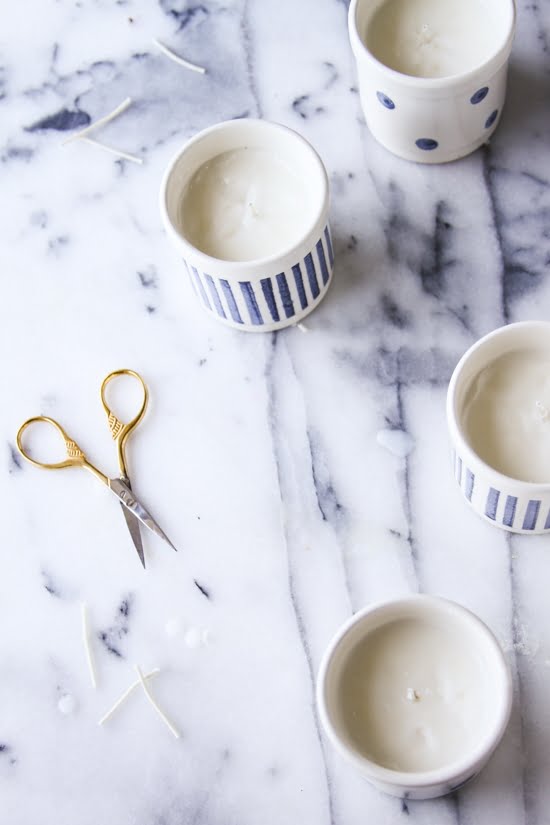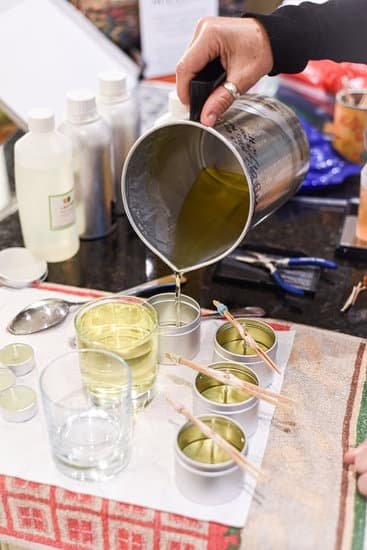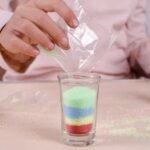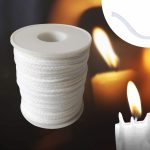In recent years, there has been a surge in popularity for homemade candles. Many people are turning to candle making as a creative outlet and a way to elevate the ambiance of their living spaces. One of the key reasons for this growing trend is the use of essential oils in candle making. These concentrated plant extracts not only add wonderful scents to candles but also offer a range of therapeutic benefits.
Essential oils have long been used for their aromatic and healing properties. When incorporated into candles, they can transform any room into a tranquil sanctuary, promoting relaxation, reducing stress, and even improving sleep quality. Additionally, essential oils can provide natural alternatives to synthetic fragrances and harmful chemicals often found in commercial candles.
When it comes to choosing essential oils for candle making, safety should always be a top priority. Not all essential oils are suitable for use in candles due to their composition and potential risks when heated. Therefore, it is crucial to understand which essential oils are safe for candle making to ensure both an enjoyable experience and peace of mind.
By exploring the world of safe essential oils for candle making, you can unleash your creativity while creating an inviting atmosphere infused with delightful scents and holistic benefits.
In this article, we will discuss the importance of safety when selecting essential oils, assess quality and purity factors, highlight the top 5 safe essential oils for candle making, delve into their unique aromatherapeutic advantages, provide step-by-step guidance on incorporating them into your homemade candles, as well as share precautions and tips to make your candle making journey successful and secure.
So let’s dive in.
Understanding the importance of safety when choosing essential oils for candle making
One of the key factors to consider when making candles with essential oils is safety. While essential oils offer a wide range of benefits and aromatherapeutic properties, it is crucial to choose oils that are safe specifically for candle making. This ensures that the resulting candles are not only pleasant and aromatic but also safe for use.
When selecting essential oils for candle making, it is important to avoid oils that are known to be sensitizing or irritating for skin contact or inhalation. Some common examples of essential oils to avoid in candle making include cinnamon bark oil, clove bud oil, and oregano oil. These oils can cause skin irritation or even respiratory issues when used in high concentrations.
To ensure safety, it is recommended to choose essential oils that are known to have a low risk of sensitization and are generally recognized as safe (GRAS) by regulatory authorities such as the Food and Drug Administration (FDA). Additionally, selecting high-quality essential oils from reputable sources is vital. Cheap or adulterated essential oils may contain impurities or synthetic additives that could pose risks when used in candles.
| Essential Oil | Aromatherapeutic Benefits |
|---|---|
| Lavender | Calming, relaxing, and promotes better sleep |
| Lemon | Uplifting, refreshing, and enhances focus |
| Eucalyptus | Cleansing, invigorating, and supports respiratory health |
| Peppermint | Energizing, cooling, and aids digestion |
| Sweet Orange | Cheerful, mood-lifting, and relieves stress |
Choosing safe essential oils not only ensures a pleasant and therapeutic experience when burning the candle but also minimizes potential risks for individuals with sensitivities or allergies. By understanding the importance of safety in selecting essential oils for candle making, you can enjoy the benefits of aromatherapy without compromising on wellbeing.
Assessing the quality and purity of essential oils for safe candle making
When it comes to making candles with essential oils, ensuring the quality and purity of the oils is crucial for a safe and enjoyable experience. Low-quality or adulterated essential oils may not only compromise the scent of your candles but also pose health risks when burned. Here are some important factors to consider when assessing the quality and purity of essential oils for candle making:
- Source: Where the essential oil is sourced from can greatly impact its quality. Look for oils that are sourced from reputable suppliers who prioritize sustainable farming practices and ethical sourcing methods. Oils derived from organic plants are often preferred as they are free from synthetic pesticides and chemical additives.
- Testing: Reputable suppliers will often subject their essential oils to rigorous testing to ensure their purity and authenticity. Look for oils that have undergone third-party testing by independent laboratories. These tests typically assess factors such as purity, potency, and the presence of any contaminants or adulterants.
- Packaging: Pay attention to how the essential oil is packaged. High-quality essential oils are usually bottled in dark glass containers, which prevent light degradation that can negatively affect the oil’s aroma and potency. Additionally, look for bottles that have a dropper or reducer cap to ensure precise measurements during candle making.
| Consideration | Description |
|---|---|
| Source | Sourced from reputable suppliers using sustainable and ethical practices |
| Testing | Undergoes third-party testing by independent laboratories to ensure purity |
| Packaging | Dark glass containers to protect oils from light degradation, with a dropper or reducer cap for precise measurements |
By carefully assessing the quality and purity of essential oils, you can ensure that your homemade candles not only smell wonderful but also provide a safe and pleasant experience for yourself and others.
Top 5 essential oils that are safe for candle making
Lavender
Lavender essential oil is a popular choice for candle making due to its calming and relaxing properties. When used in candles, it can create a soothing atmosphere that promotes restful sleep and alleviates stress and anxiety. Lavender also has antibacterial properties, making it a great option for creating a clean and refreshing environment.
Lemon
Lemon essential oil is known for its fresh and citrusy scent that can uplift the mood and promote mental clarity. This oil is often used in candles to create an invigorating and energizing ambiance. Lemon essential oil also has natural cleaning properties, making it an excellent choice for homemade candles that are meant to provide both fragrance and purification.
Eucalyptus
Eucalyptus essential oil is commonly used in candle making for its refreshing and invigorating aroma. It has a cool menthol-like scent that can clear the airways and promote respiratory health. Eucalyptus candles are perfect for creating a spa-like atmosphere or when you need to decongest your sinuses during cold or flu season.
Peppermint
Peppermint essential oil is known for its strong minty scent that can awaken the senses and boost focus and concentration. When incorporated into candles, peppermint can provide a refreshing aroma that helps reduce fatigue and mental exhaustion. Peppermint candles are especially popular during the holiday season, as they can create a festive atmosphere.
Sweet Orange
Sweet orange essential oil offers a bright, sweet, and uplifting fragrance that can enhance mood and reduce feelings of tension or negativity. Its cheerful aroma makes it an excellent choice for candle making, especially when you want to create an environment filled with positivity and joy. Sweet orange candles work well in any room of the house, promoting relaxation and happiness.
When using these essential oils in candle making, it is important to ensure their quality and purity. Look for oils that are labeled as 100% pure essential oil and have undergone proper testing for safety and authenticity. It is also recommended to purchase from reputable brands or suppliers. Diluting the essential oils properly is crucial to achieve a safe and balanced fragrance in your candles. Consult the specific dilution guidelines provided by the manufacturer or an experienced aromatherapist.
To incorporate these essential oils into your homemade candle making process, you can add them at different stages such as during the melting of the wax, after pouring but before setting, or even directly onto the wick. Experimenting with different proportions and combinations of essential oils can help you create unique scents that suit your preferences.
In addition to these top 5 safe essential oils, there are numerous other options that can be used in candle making. Some examples include rosemary, cinnamon, grapefruit, ylang-ylang, and patchouli. Each of these oils brings its own set of benefits and aromatherapeutic properties to enhance your candles.
Remember that while essential oil candles can provide delightful scents, they are not meant to replace professional medical advice or treatments. If you have any allergies or sensitivities to specific fragrances, always perform a patch test before using new essential oils in candle making.
Exploring the unique aromatherapeutic benefits of each safe essential oil for candle making
When it comes to candle making, using essential oils not only adds a delightful aroma but also provides aromatherapeutic benefits that can enhance your well-being. Here are the top 5 essential oils that are safe for candle making and their unique aromatherapeutic benefits:
- Lavender: Known for its calming properties, lavender essential oil can help promote relaxation and reduce stress. Lighting a lavender-scented candle can create a soothing atmosphere, making it ideal for unwinding after a long day or promoting a restful night’s sleep.
- Lemon: If you’re looking for an energizing and uplifting scent, lemon essential oil is the way to go. Its refreshing citrus aroma can boost your mood and increase focus when you need a pick-me-up. Lighting a lemon-scented candle is perfect for creating an invigorating ambiance in your workspace or during morning routines.
- Eucalyptus: When congestion strikes or if you’re in need of mental clarity, eucalyptus essential oil is the perfect choice. The strong, minty scent of eucalyptus can help open up airways and promote respiratory health while also improving concentration and alertness.
- Peppermint: Another invigorating scent option is peppermint essential oil. Its cooling and refreshing aroma can help ease headaches, relieve muscle tension, and improve focus and concentration. A peppermint-scented candle is great to have on hand when you need an instant energy boost.
- Sweet Orange: With its bright and uplifting citrus fragrance, sweet orange essential oil brings a warm and cheerful feel to any space. It has mood-boosting properties that can help alleviate anxiety and uplift your spirits during times of stress or sadness.
To incorporate these unique aromatherapeutic benefits into your homemade candles, follow this step-by-step guide:
- Start with high-quality essential oils that are specifically labeled for candle making.
- Choose a candle wax that is compatible with essential oils, such as soy wax or coconut wax.
- Melt the wax according to the manufacturer’s instructions and let it cool slightly.
- Add your desired amount of essential oil to the melted wax, typically around 6-10% of the total volume.
- Stir gently but thoroughly to ensure the essential oil is evenly distributed throughout the wax.
- Pour the scented wax into your chosen candle container and allow it to cool and solidify completely.
By following these steps and using safe essential oils, you can enhance both the aesthetic appeal and aromatherapeutic properties of your homemade candles. So start exploring the unique benefits of lavender, lemon, eucalyptus, peppermint, and sweet orange essential oils in your candle making journey today.
Step-by-step guide on how to incorporate essential oils into your homemade candle making process
Creating your own candles with the delightful aroma of essential oils can be a rewarding and relaxing experience. By following a step-by-step guide, you can safely integrate essential oils into your homemade candle making process.
- Choose the Right Wax: Begin by selecting a wax that is suitable for candle making and can effectively hold the scent of the essential oil. Soy wax or coconut wax are popular choices as they have good scent throw and provide a clean burn.
- Measure and Melt the Wax: Carefully measure the amount of wax needed for your desired number of candles. Be sure to follow proper measurements to achieve the desired fragrance intensity. Melt the wax using a double boiler or microwave, following the instructions provided with your chosen wax.
- Prepare Your Containers: While waiting for the wax to melt, prepare your containers by placing wicks at their centers and securing them in place using sticky tabs or adhesive dots. Ensure that the wicks are centered and standing straight.
- Add Essential Oils: Once the wax has melted, remove it from heat and let it cool slightly to around 130-140°F (54-60°C). This is an ideal temperature range for adding essential oils as it helps retain their aromatic properties without being overheated.
Add your chosen essential oils into the melted wax, starting with a small amount and gradually adjusting to achieve your preferred scent intensity. Be mindful not to exceed recommended maximum usage rates for safety reasons. - Stir and Pour: Gently stir the melted wax and essential oils together using a spoon or stirring stick, ensuring that they are thoroughly mixed throughout. Then, carefully pour this fragrant mixture into your prepared containers while holding each wick upright in its center position.
- Allow Cooling and Cure Time: Let your candles cool at room temperature undisturbed for several hours or until fully solidified. This process may take anywhere from 24 to 48 hours, depending on the size of your candles and environmental factors.
By following these step-by-step instructions, you can create beautifully scented candles infused with your favorite essential oils. Remember to always prioritize safety by using quality ingredients, following manufacturer guidelines, and practicing caution when handling hot wax. With a little patience and creativity, candle making can become an enjoyable hobby that brings soothing aromas to your home.
Safety precautions and tips to ensure a successful and safe candle making experience using essential oils
When incorporating essential oils into your homemade candle making process, it is crucial to prioritize safety. Here are some important precautions and tips to ensure a successful and safe experience:
- Dilute properly: Essential oils are highly concentrated plant extracts and should always be diluted before adding them to your candles. Dilution helps prevent skin irritation, ensures proper fragrance distribution, and reduces the risk of fire hazards. A general rule of thumb is to use 1 ounce (30 ml) of carrier oil for every 10-12 drops of essential oil.
- Choose heat-resistant containers: When selecting containers for your candles, make sure they are suitable for holding hot liquids. Glass jars or heat-resistant ceramic vessels are ideal choices as they can withstand the high temperatures that occur during the candle-making process.
- Use appropriate wicks: The size and type of wick you choose can greatly impact the safety and performance of your candles. Selecting the right wick ensures that the candle burns evenly and minimizes soot production. Consider factors such as diameter, wax type, desired burn time, and desired flame size when choosing wicks.
Additional Safety Precautions
- Never leave a burning candle unattended.
- Keep candles away from flammable materials.
- Trim the wick to ¼ inch before each use to prevent excessive smoke or flame height.
- Avoid using essential oils that can cause skin sensitization or allergic reactions.
Taking these precautions will help you enjoy a safe candle-making experience while maximizing the benefits of essential oils in your creations. When in doubt, consult reliable sources or seek guidance from experienced candle makers for further safety tips specific to your needs.
Remember, prioritizing safety not only protects you but also allows you to fully appreciate the aromatic ambiance created by your homemade candles.
An overview of additional essential oils that can be safely used in candle making and their unique benefits
Additional Essential Oils for Candle Making
In addition to the top 5 essential oils that were previously mentioned, there are several other options that can be safely used in candle making. These essential oils not only provide beautiful scents but also carry their own unique benefits. Here are a few examples:
Rosemary Essential Oil
Rosemary essential oil is known for its refreshing and rejuvenating properties. When used in candles, it can promote mental clarity and improve focus. Its invigorating scent is perfect for creating an energizing atmosphere.
Frankincense Essential Oil
Frankincense essential oil has been valued for centuries due to its calming and grounding effects. Adding it to candles can create a soothing ambiance, making it ideal for relaxation and meditation.
Ylang Ylang Essential Oil
Ylang ylang essential oil has a sweet, floral fragrance that is commonly associated with relaxation and reducing stress. Incorporating it into candles can help create a tranquil environment, perfect for winding down after a long day.
Cedarwood Essential Oil
Cedarwood essential oil carries a warm and woody aroma that has calming effects on the mind and body. It can help create a cozy and comforting atmosphere when used in candles.
Geranium Essential Oil
Geranium essential oil offers a delightful floral scent with hints of citrus undertones. This oil is known to promote feelings of balance and harmony, making it a great choice for candles intended to create a sense of peacefulness.
Benefits of Using Additional Essential Oils in Candles
When using these additional essential oils in candle making, you not only add delightful fragrances but also get to experience their unique benefits. Essential oils have the potential to positively impact mood, enhance relaxation, and support overall well-being. By selecting the right essential oil for your candle, you can create a personalized atmosphere that suits your needs and preferences.
It is important to remember to use high-quality essential oils that are safe for candle making. Look for oils that are pure and free from any additives or dilutions. Additionally, always perform a small patch test on a non-flammable surface before using any new essential oil in your candles to ensure it burns safely and emits a pleasant fragrance.
Incorporating these additional essential oils into your homemade candles not only allows for greater personalization but also provides an opportunity to explore the diverse world of aromatherapy and its many benefits. Experiment with different combinations of essential oils, or even consider creating your own signature scent by blending multiple oils together. The possibilities are endless when it comes to creating unique and aromatic candles using these safe essential oils.
FAQs
Dilution of Essential Oils for Candle Making
One common concern when using essential oils in candle making is the dilution process. It’s important to remember that essential oils are highly concentrated and can be irritating or even harmful if used undiluted. When adding essential oils to your candle wax, it is recommended to dilute them with a carrier oil or another base ingredient.
To dilute essential oils for candle making, start by choosing a suitable carrier oil such as coconut oil, almond oil, or soybean oil. For every ounce of carrier oil, add a few drops of your chosen essential oil. The exact ratio will depend on the potency of the essential oil and your personal preference for scent intensity. It’s always better to start with fewer drops and gradually increase if necessary.
Blending Essential Oils for Optimal Fragrance
Another frequently asked question is how to blend essential oils to create unique fragrances for candles. Blending different essential oils can enhance the aromatherapeutic benefits and add complexity to the scent profile of your homemade candles.
When blending essential oils for candle making, consider the fragrance categories: top notes, middle notes, and base notes. Top notes are light and volatile scents that provide initial freshness; middle notes are more balanced and help create harmony between different scents; base notes are deep and long-lasting aromas that anchor the overall fragrance.
Experiment with combining different oils from each category to create a well-rounded scent that appeals to you. Start by adding one drop at a time until you achieve the desired aroma. Keep in mind that certain combinations may not work well together, so it’s recommended to do some research beforehand or consult with experts in aromatherapy or candle making.
Proper Storage of Essential Oils Used in Candle Making
Lastly, ensuring proper storage of essential oils used in candle making is crucial to maintain their quality and potency. Essential oils should be stored in dark glass bottles in a cool, dry place away from direct sunlight and heat sources. Exposure to light and heat can cause the oils to deteriorate faster.
It’s also important to keep essential oils out of reach from children and pets, as some oils can be toxic if ingested or applied directly onto the skin without proper dilution. Additionally, make sure to label each bottle with the name of the essential oil and date of purchase to keep track of their shelf life.
By following these guidelines for dilution, blending, and storage, you can safely use essential oils in your candle making process while maximizing their aromatic benefits.
Inspiring DIY candle recipes using safe essential oils and creative tips to enhance their fragrance and aesthetic appeal
Creating homemade candles allows you to customize the fragrance and aesthetic appeal to suit your personal preferences. By incorporating safe essential oils into your candle making process, you can elevate the sensory experience and create unique scents that promote relaxation, upliftment, and overall well-being. Here are some inspiring DIY candle recipes using safe essential oils and creative tips to enhance their fragrance and aesthetic appeal.
- Calming Lavender Dream: To create a serene atmosphere in your home, mix 10 drops of lavender essential oil with 4 ounces of soy wax flakes. Add dried lavender buds for an added touch of elegance and tranquility. Pour the melted wax into a glass jar or container and place a cotton wick in the center. Allow it to cool completely before lighting.
- Refreshing Citrus Burst: For an invigorating scent that energizes and uplifts, combine 8 drops of lemon essential oil with 4 ounces of beeswax. You can add a few drops of yellow or orange liquid dye for a vibrant look. Use a wooden wick for added visual interest. Pour the melted wax into a tin container or novelty mold and let it solidify before trimming the wick.
- Soothing Eucalyptus Spa Candle: Create a spa-like ambiance by blending 6 drops of eucalyptus essential oil with 4 ounces of coconut wax. Consider adding finely chopped eucalyptus leaves for a natural touch. Use a medium-sized glass jar with an eco-friendly wooden wick for a cozy glow. Once the wax has hardened, trim the wick and enjoy the soothing aroma.
Tips for enhancing fragrance and aesthetic appeal:
- Experiment with different combinations of essential oils to create unique scent profiles.
- Consider adding dried flowers, herbs, or botanicals to your candles for visual interest.
- Use colored dyes or natural colorants like beetroot powder or spirulina powder to achieve desired hues.
- Experiment with different candle molds or containers to create interesting shapes and sizes.
- Personalize your candles with decorative labels, charms, or ribbons to make them truly one-of-a-kind.
By following these DIY candle recipes and incorporating creative tips, you can create beautiful and aromatic candles that not only enhance the ambiance of your space but also provide the wellness benefits of safe essential oils. Don’t be afraid to get creative and experiment with different scents and aesthetics to find your perfect homemade candle.
Conclusion
In conclusion, it is crucial to prioritize safety when choosing essential oils for candle making. As we have discussed throughout this article, not all essential oils are suitable for use in candles due to potential risks and hazards. However, by selecting safe essential oils, such as Lavender, Lemon, Eucalyptus, Peppermint, and Sweet Orange, you can enjoy the benefits of aromatherapy without compromising the safety of your homemade candles.
These safe essential oils not only add beautiful scents to your candles but also offer unique aromatherapeutic benefits. Lavender promotes relaxation and stress relief, Lemon uplifts mood and energizes, Eucalyptus aids in respiratory health, Peppermint boosts mental clarity and focus, while Sweet Orange brings warmth and positivity. Incorporating these essential oils into your candle making process can create a truly immersive sensory experience.
By following a step-by-step guide on incorporating essential oils into your homemade candles and taking necessary safety precautions, you can ensure a successful and safe candle making experience. Additionally, there is a wide variety of other safe essential oils that you can explore for their unique benefits. Whether you want to promote better sleep with Chamomile or enhance concentration with Rosemary, there are countless options available.
Frequently Asked Questions
Can you use any essential oil in candle making?
While it is possible to use essential oils in candle making, not all essential oils are suitable for this purpose. Certain essential oils have a low flash point and can be flammable when exposed to high heat or an open flame.
It is important to choose essential oils that are safe and specifically formulated for candle making. These types of essential oils are typically tested and designed to withstand the heat generated by burning candles without causing any safety concerns.
What brand of essential oils is best for candle making?
There isn’t necessarily a specific brand of essential oils that is considered the best for candle making as it often comes down to personal preference and individual needs. However, when choosing essential oils for candle making, it is recommended to look for reputable brands that offer high-quality, pure essential oils.
Brands that provide detailed information about their sourcing and extraction methods can also be preferred as they prioritize transparency and quality control. Experimenting with different brands and fragrances can help determine which ones suit your preferences and work well with your candle-making process.
Are essential oils flammable in candles?
Essential oils themselves are generally not flammable in their pure form, but they do contain volatile compounds that can be flammable under certain conditions. When used correctly in candles, most commercially available essential oils should not pose a significant fire hazard as they are typically diluted with carrier oils or other ingredients.
However, it is important to exercise caution when working with any flammable substances during the candle-making process. It is always recommended to follow proper safety guidelines, such as using appropriate containers, wicks, and ensuring proper ventilation while working with both essential oils and candles containing them.

Welcome to my candle making blog! In this blog, I will be sharing my tips and tricks for making candles. I will also be sharing some of my favorite recipes.





